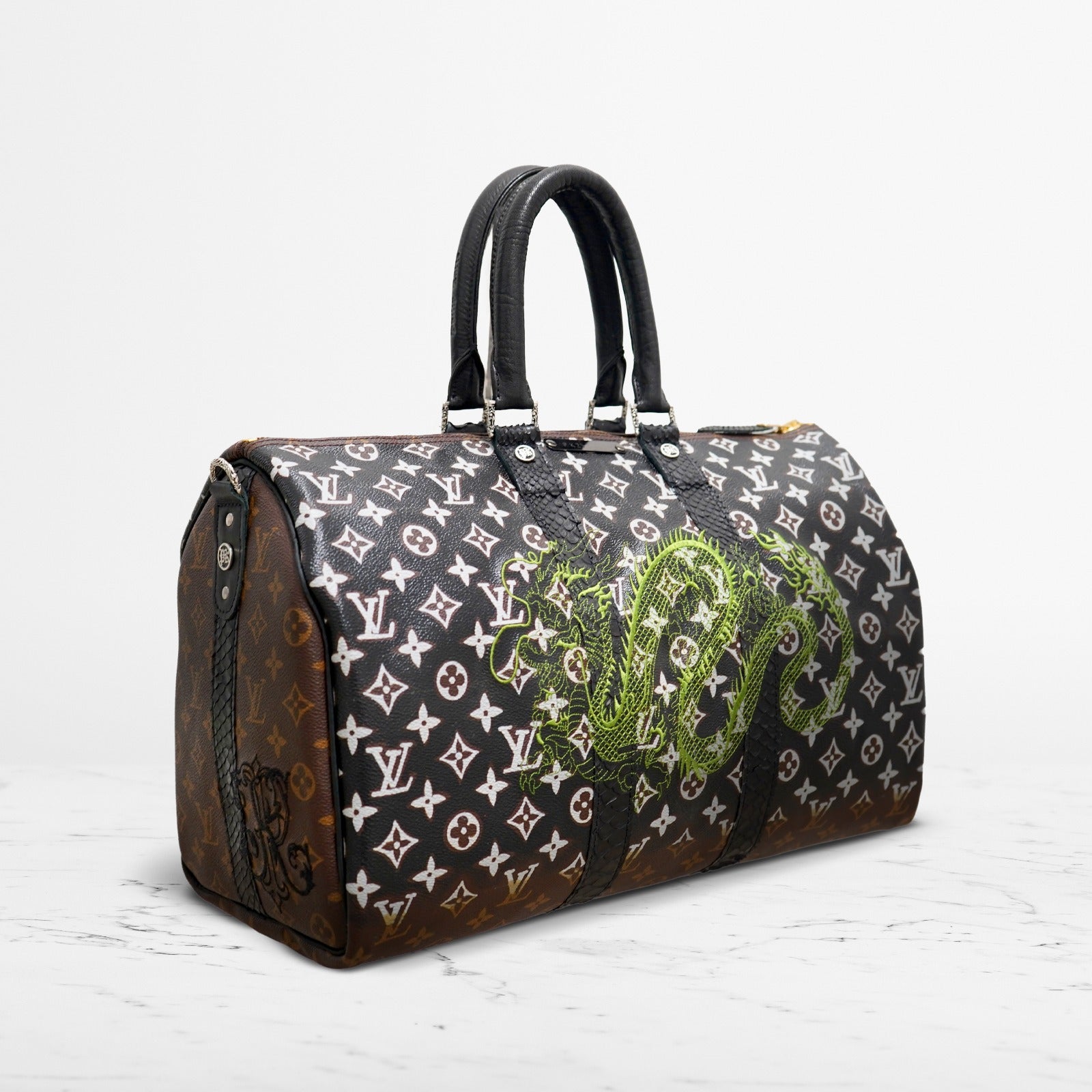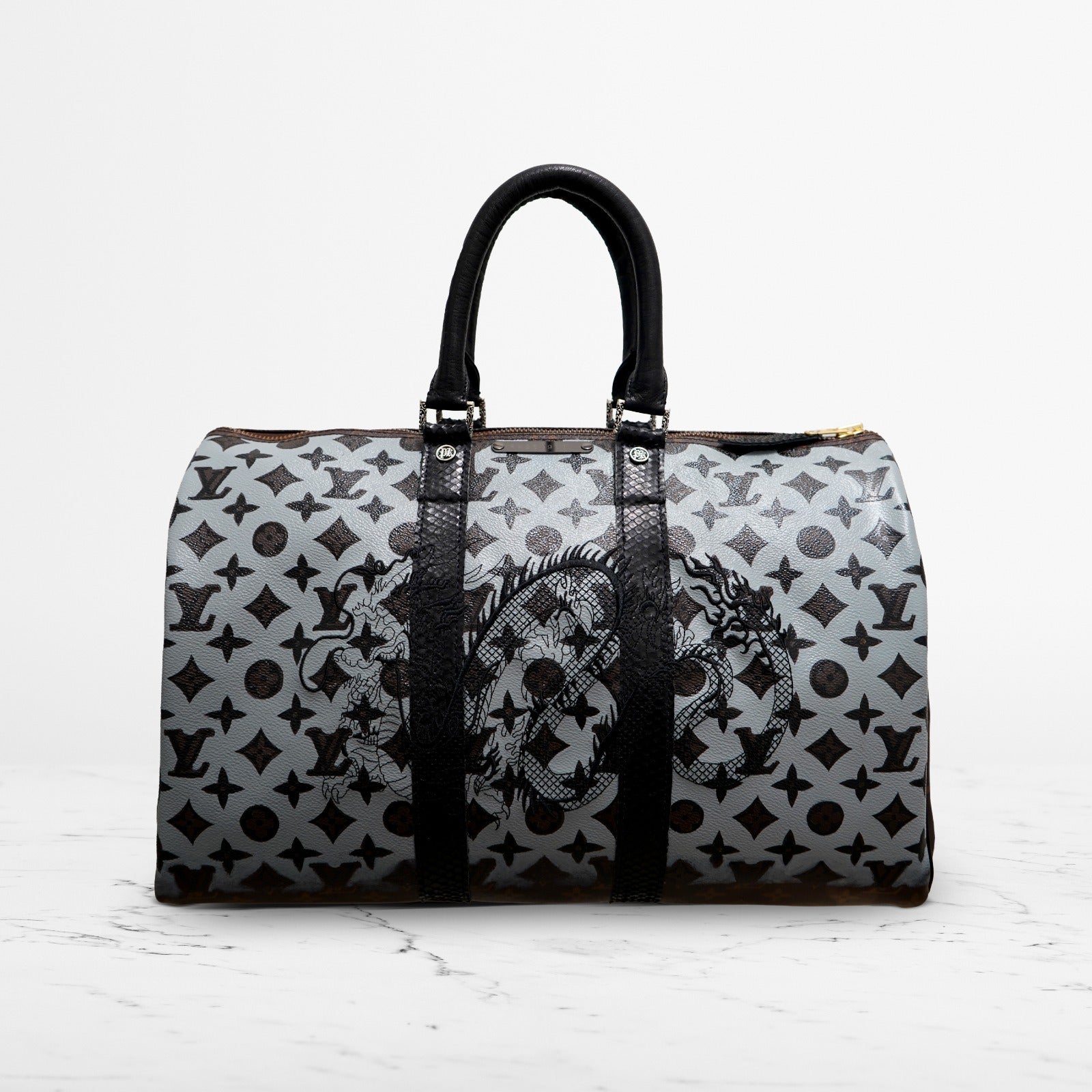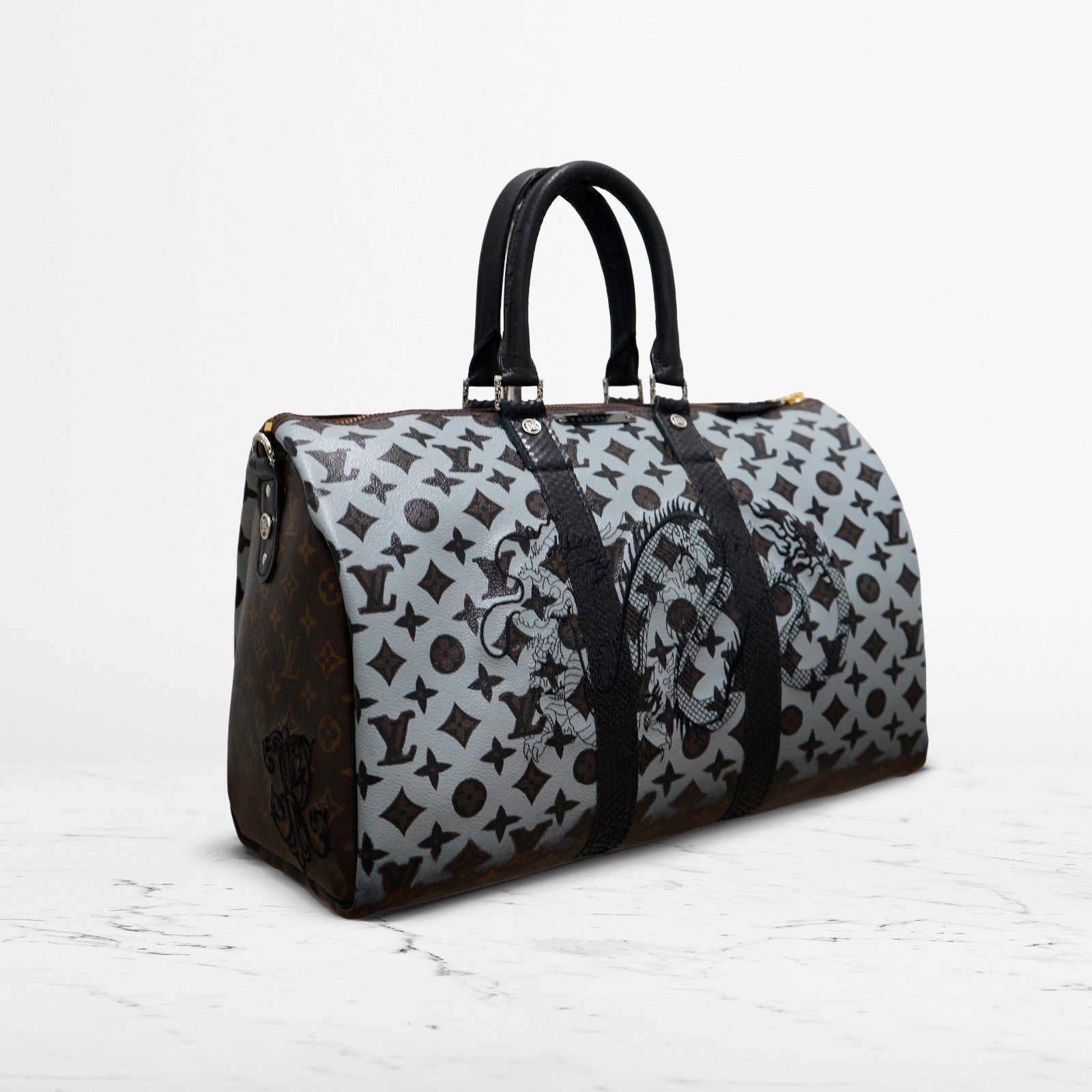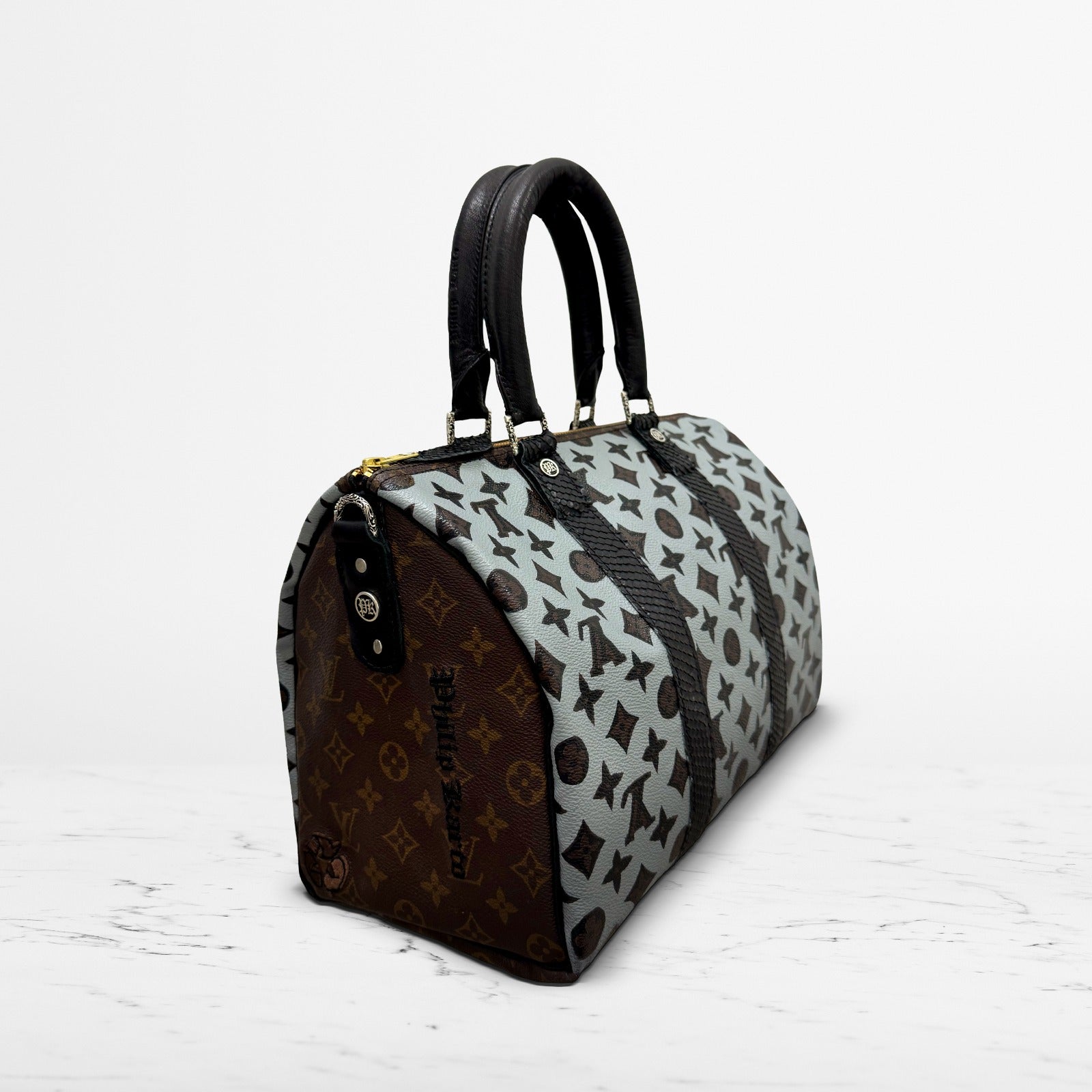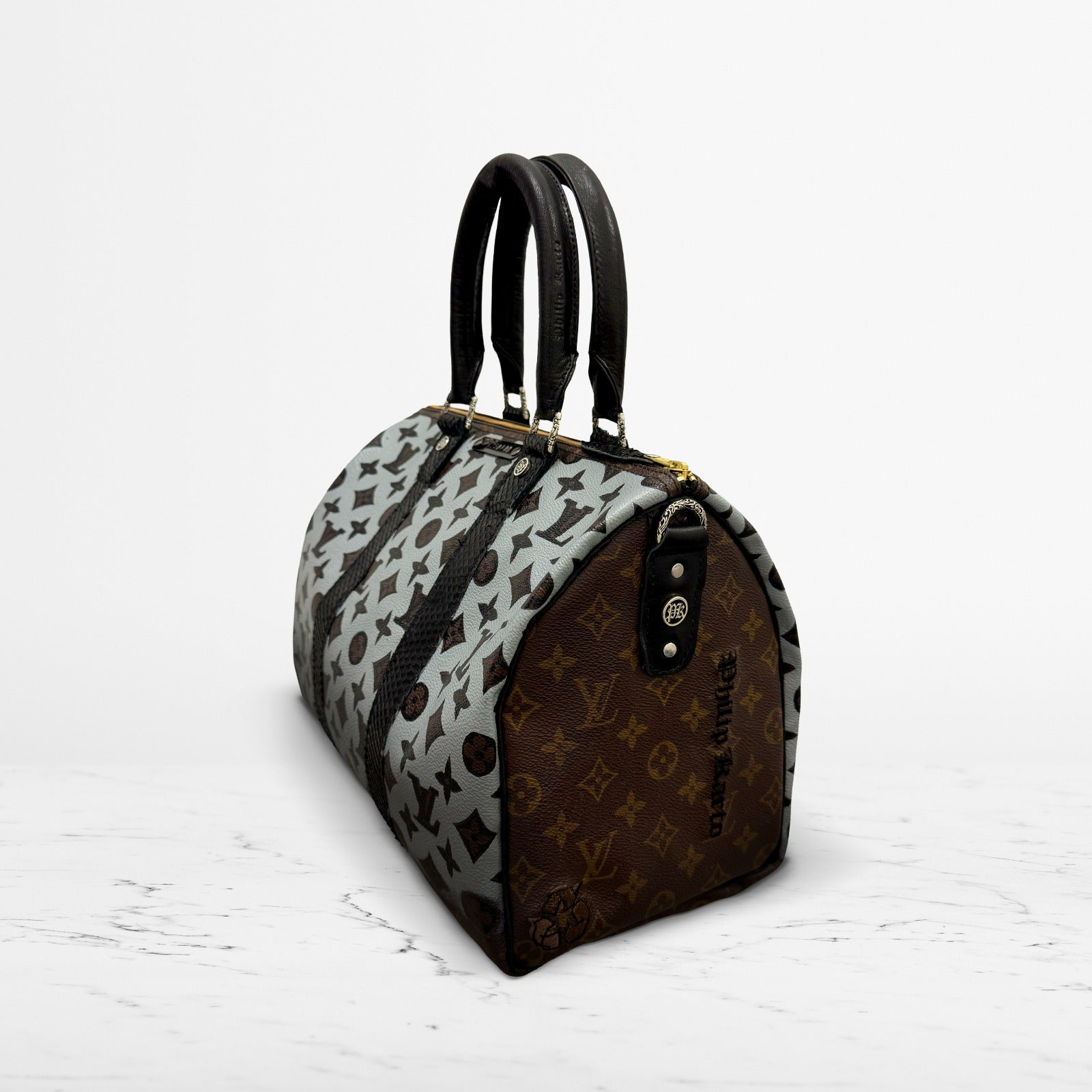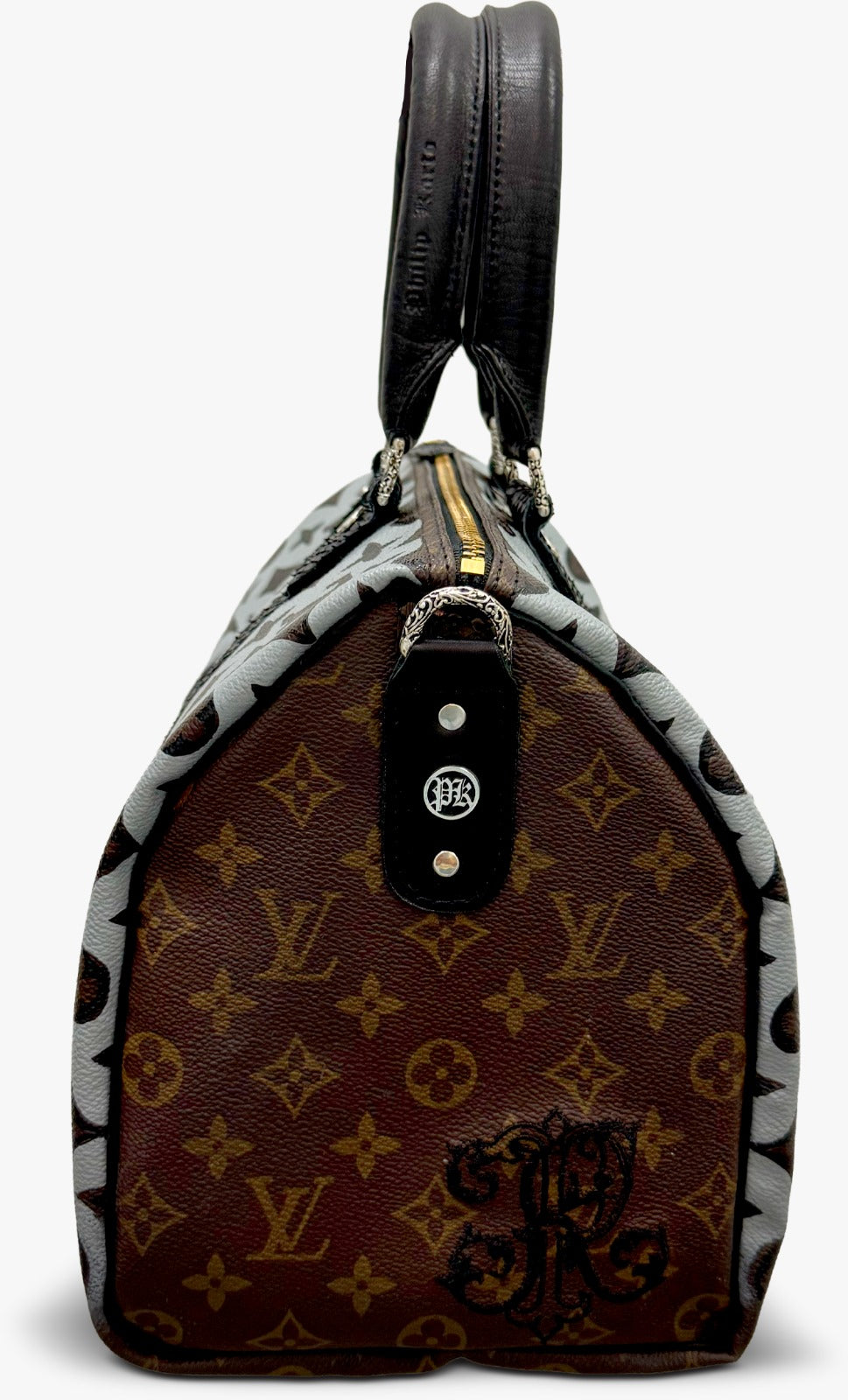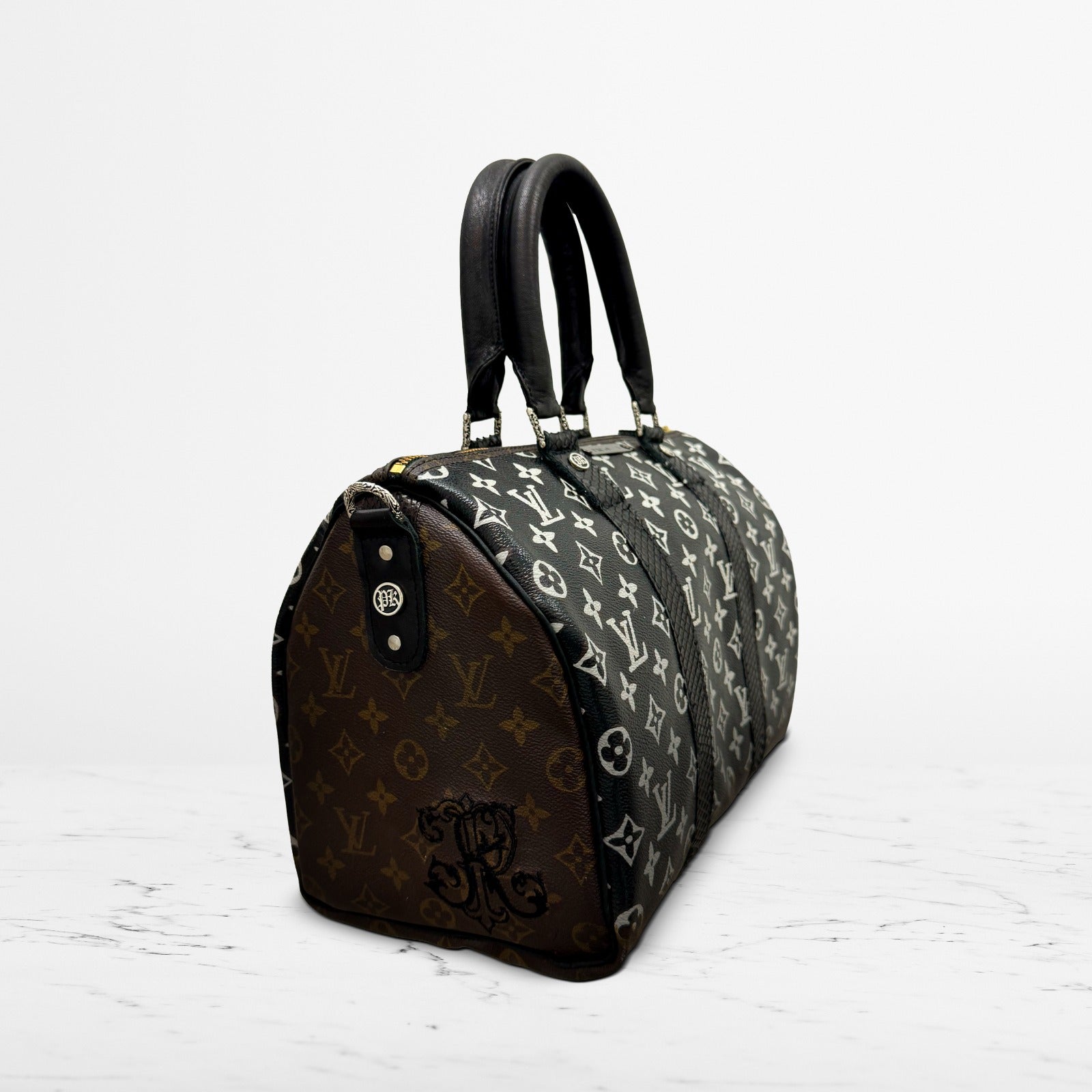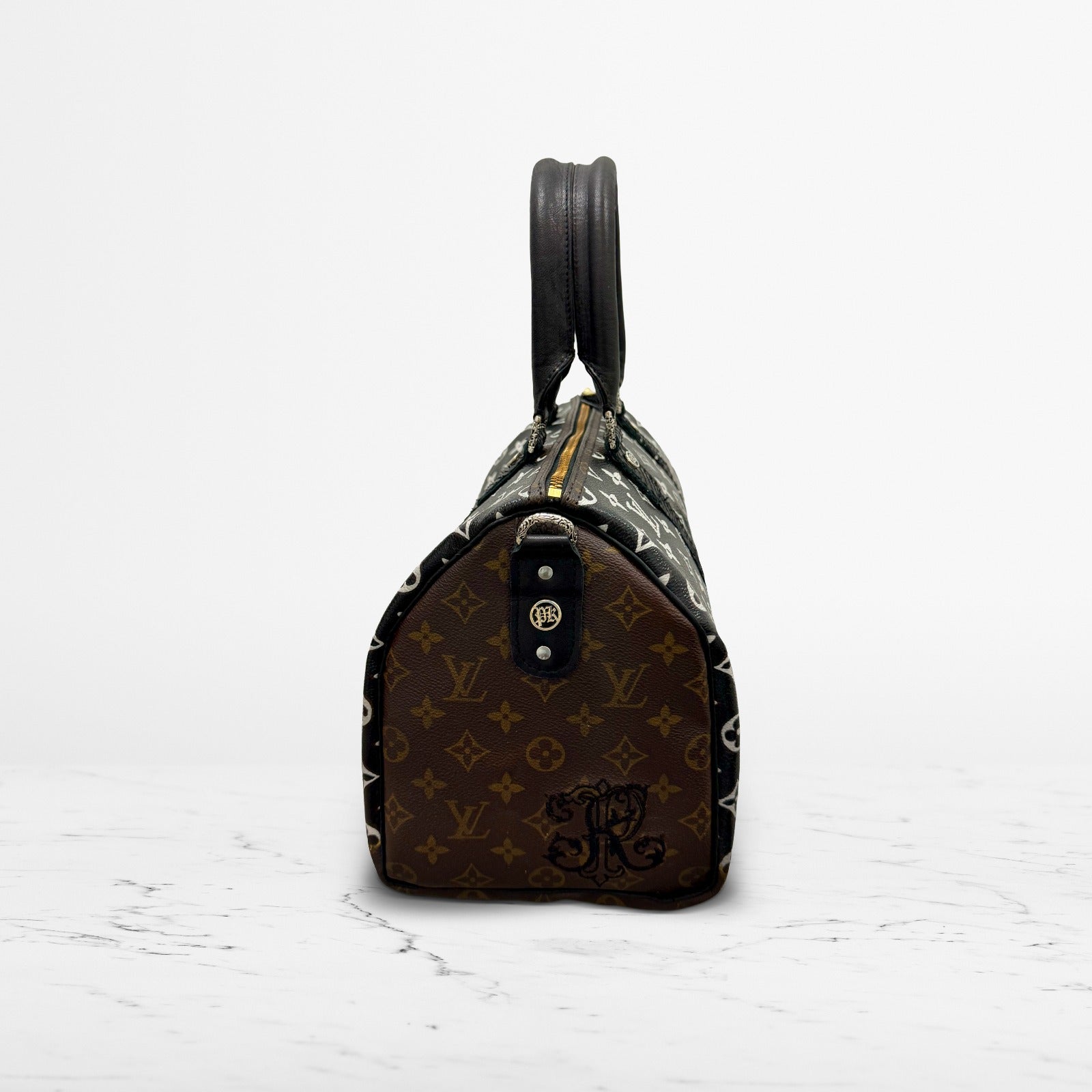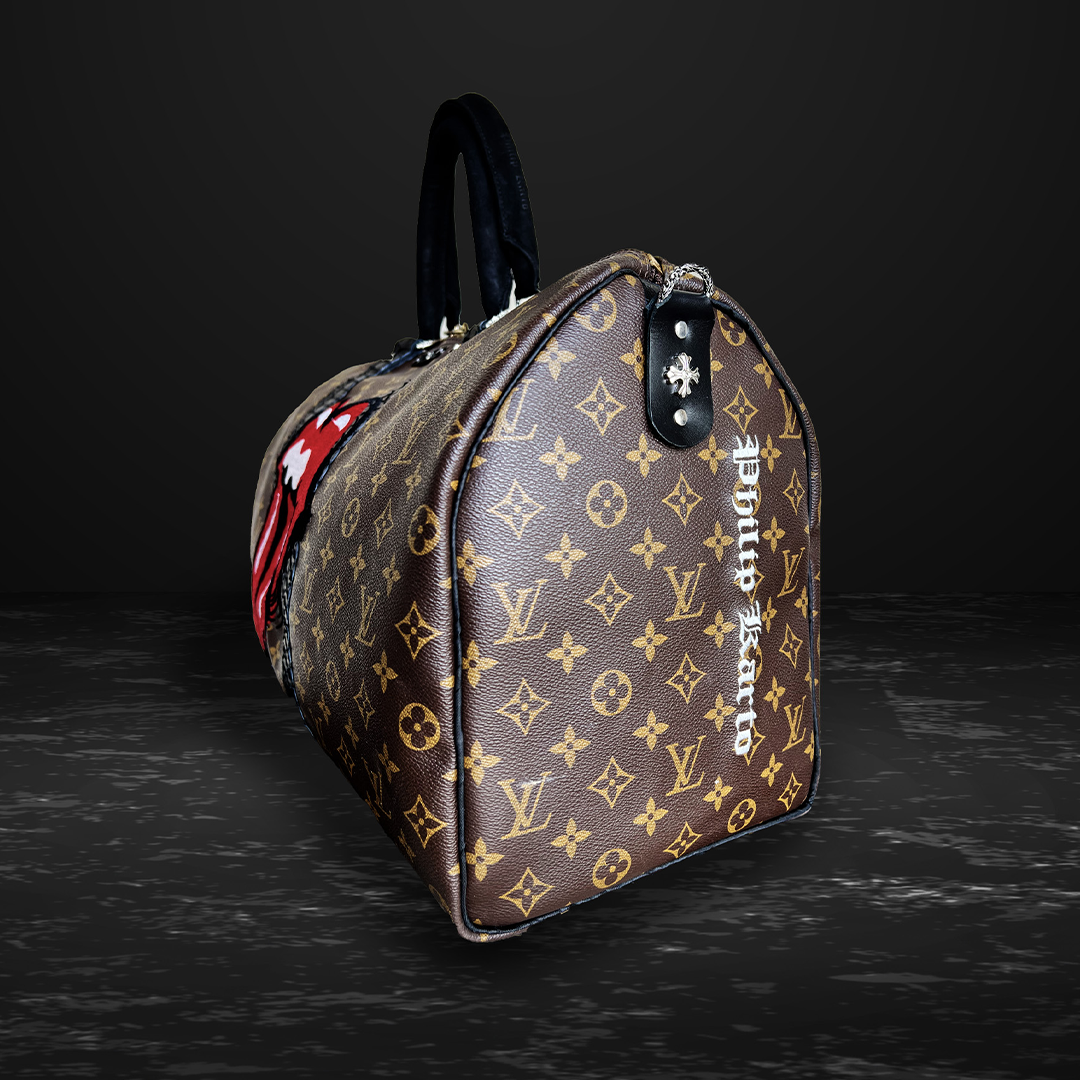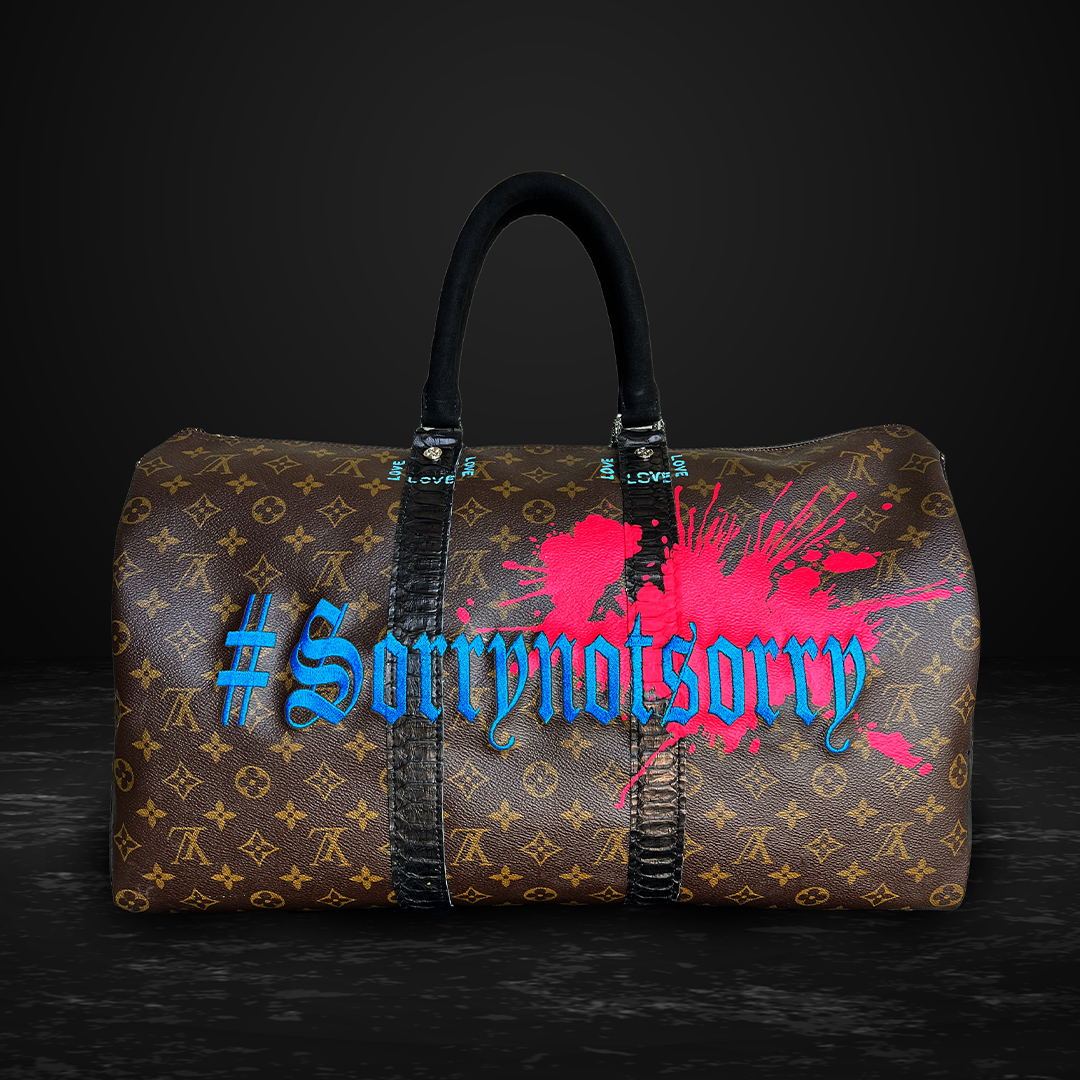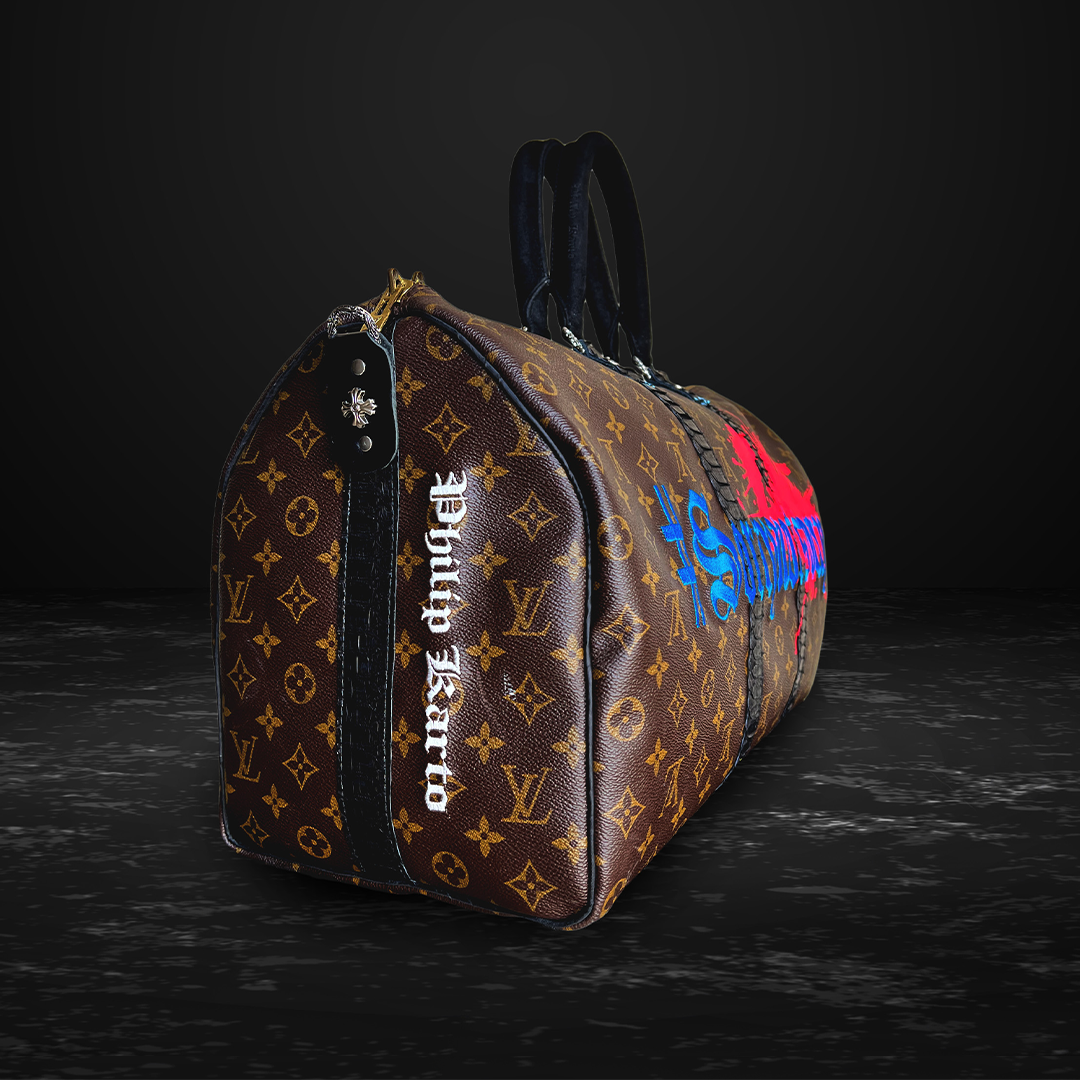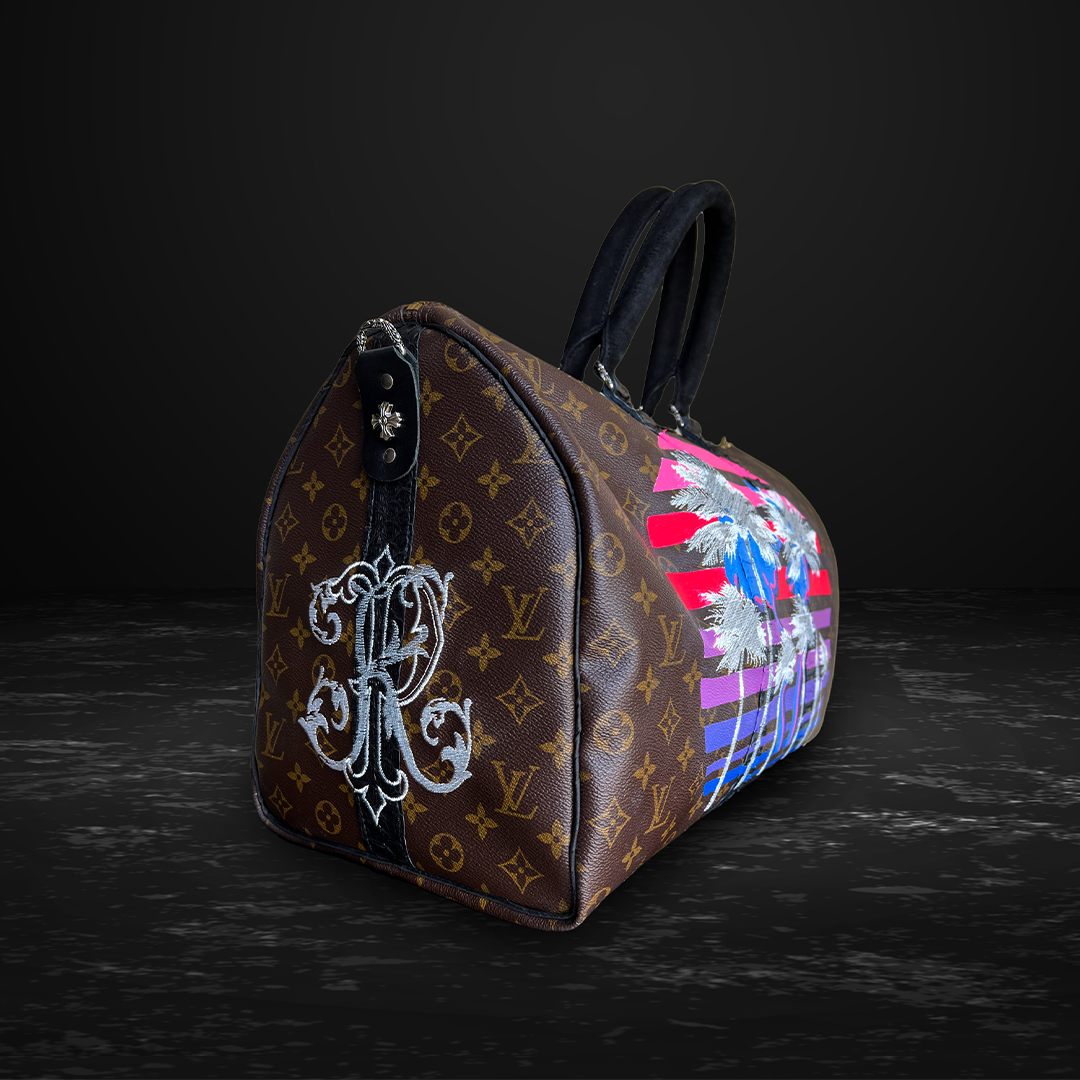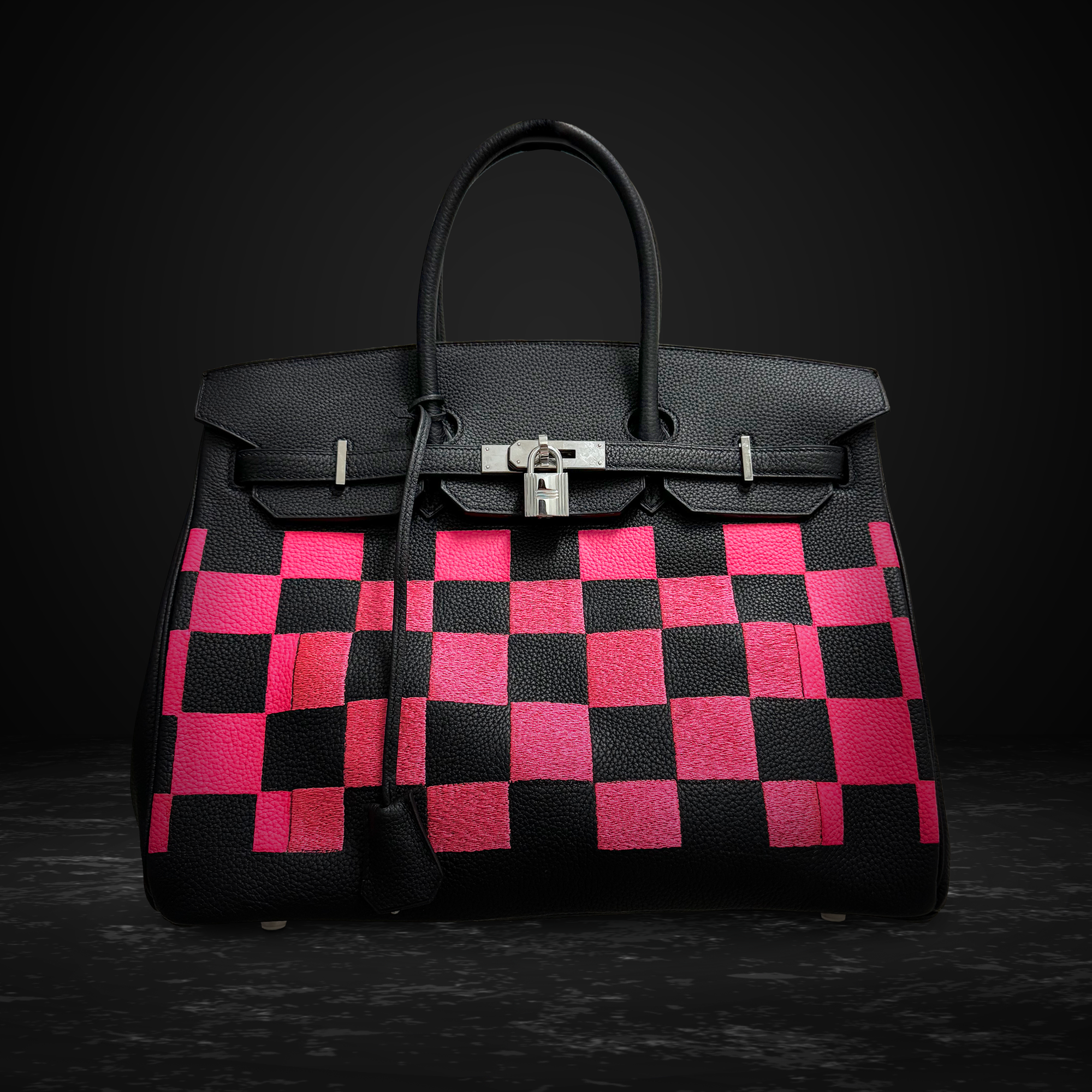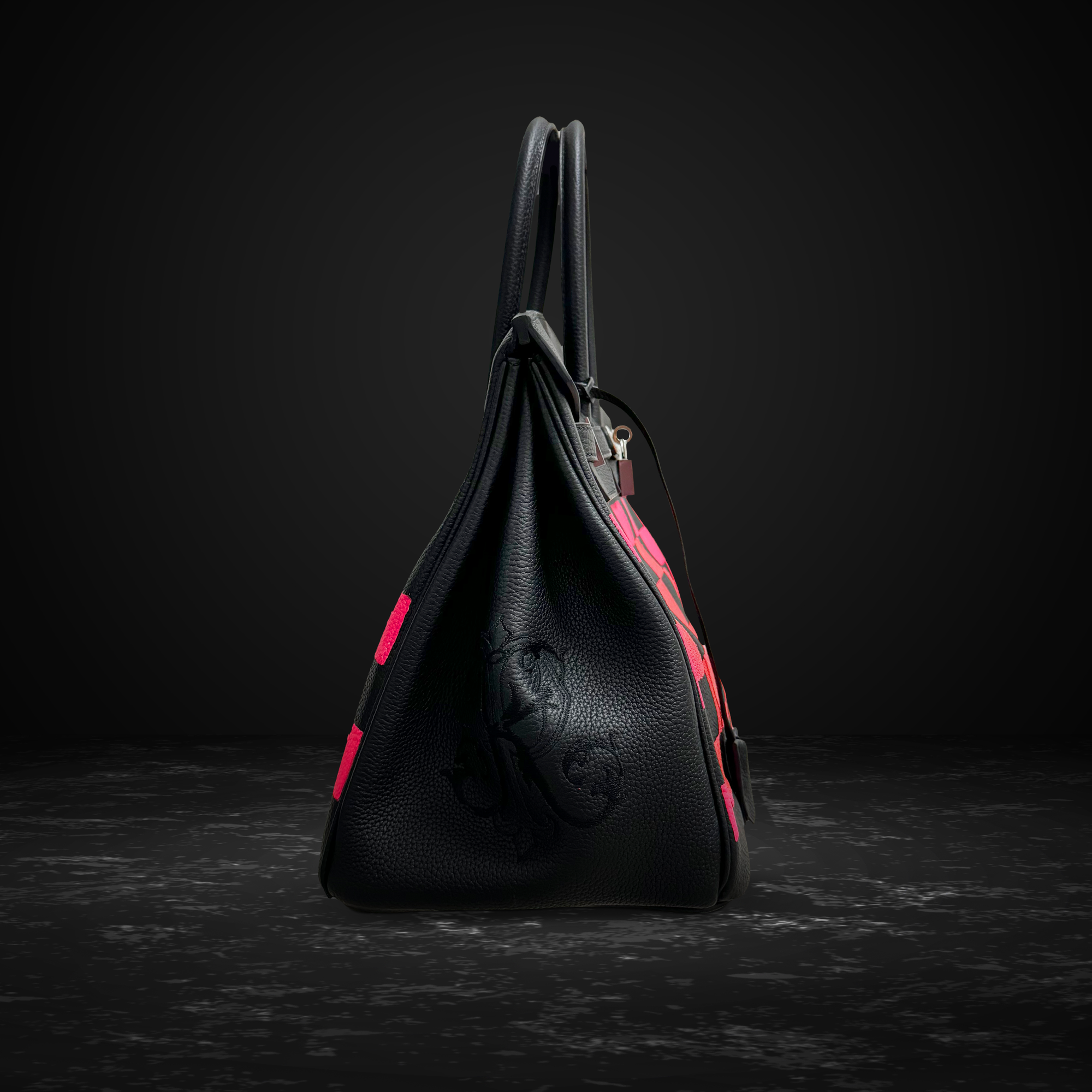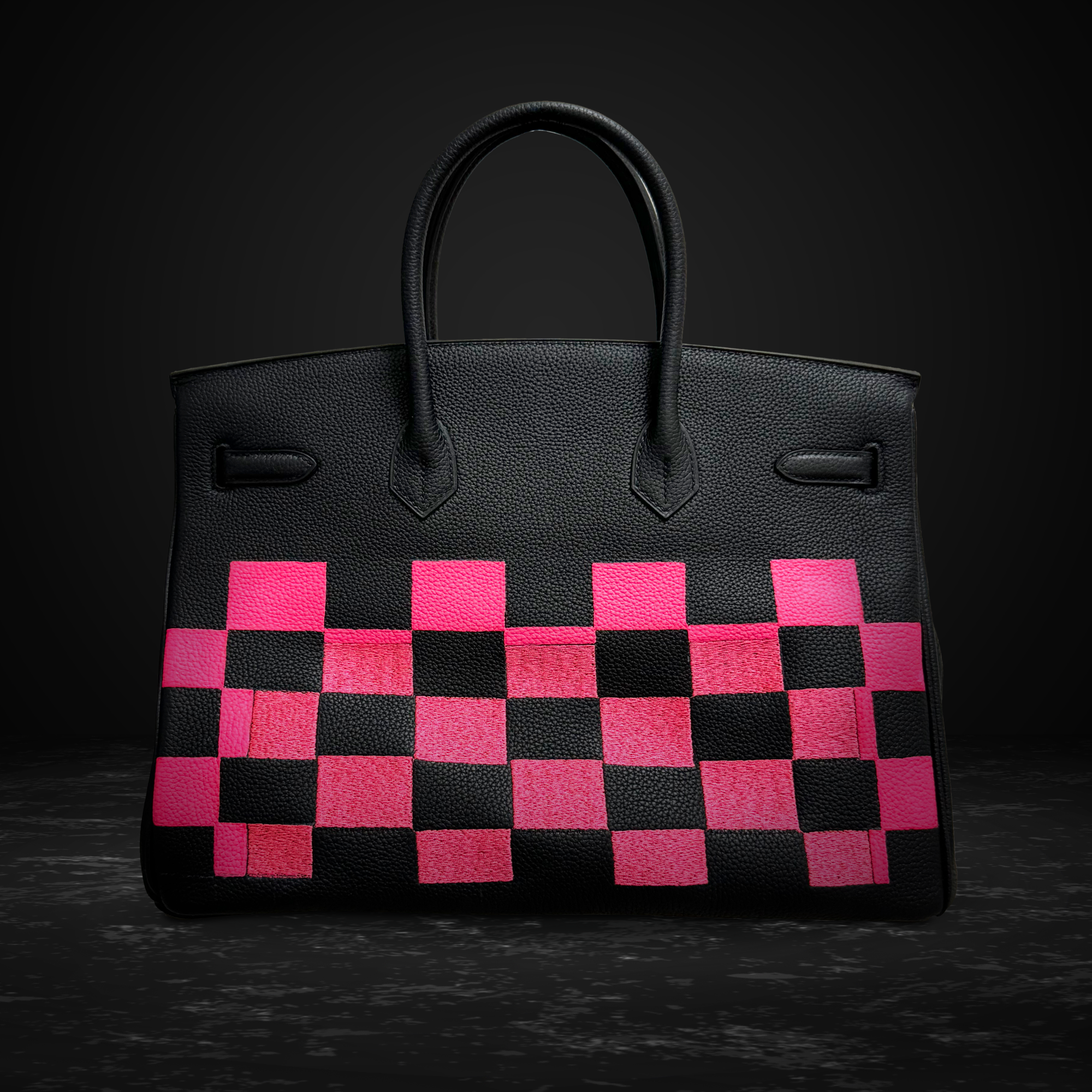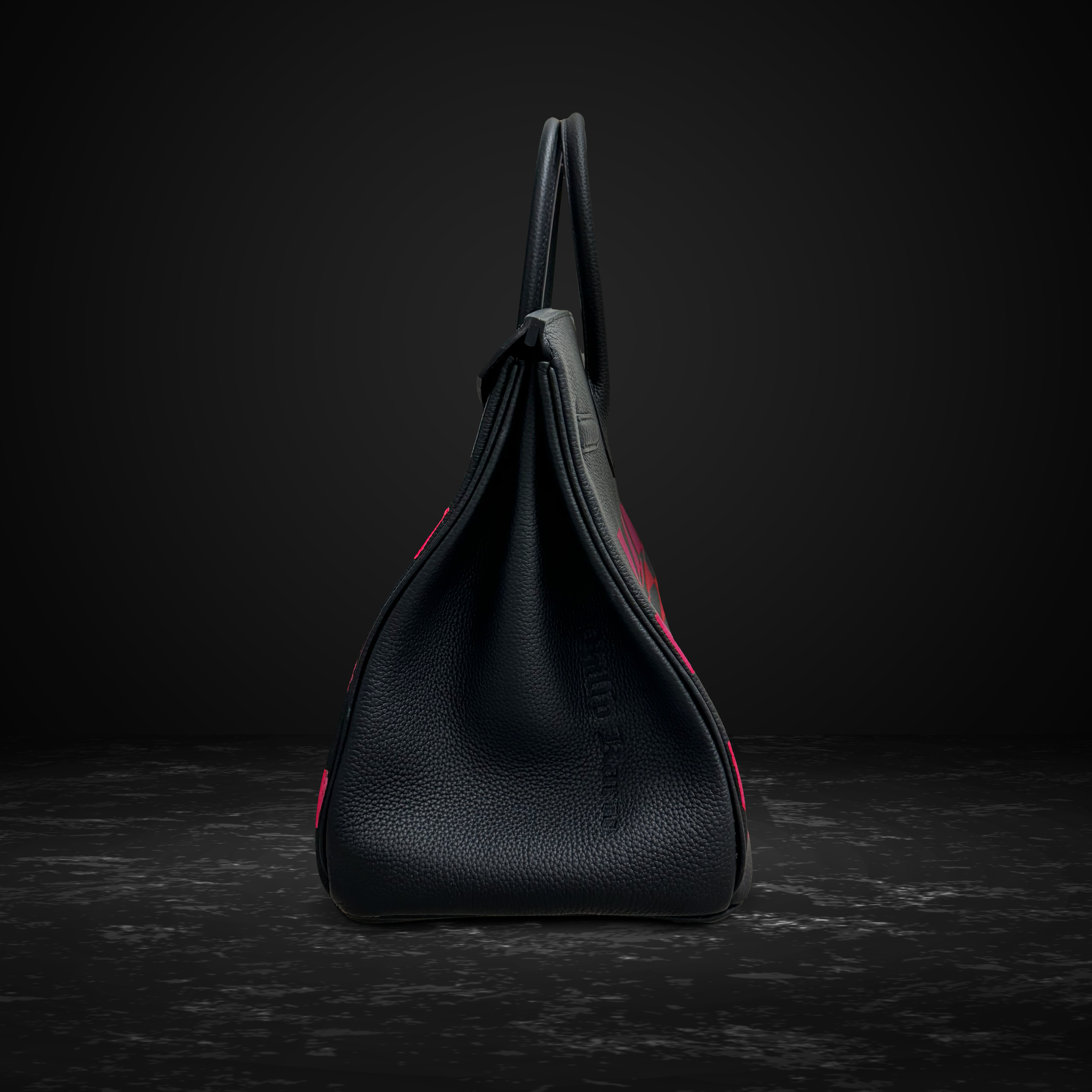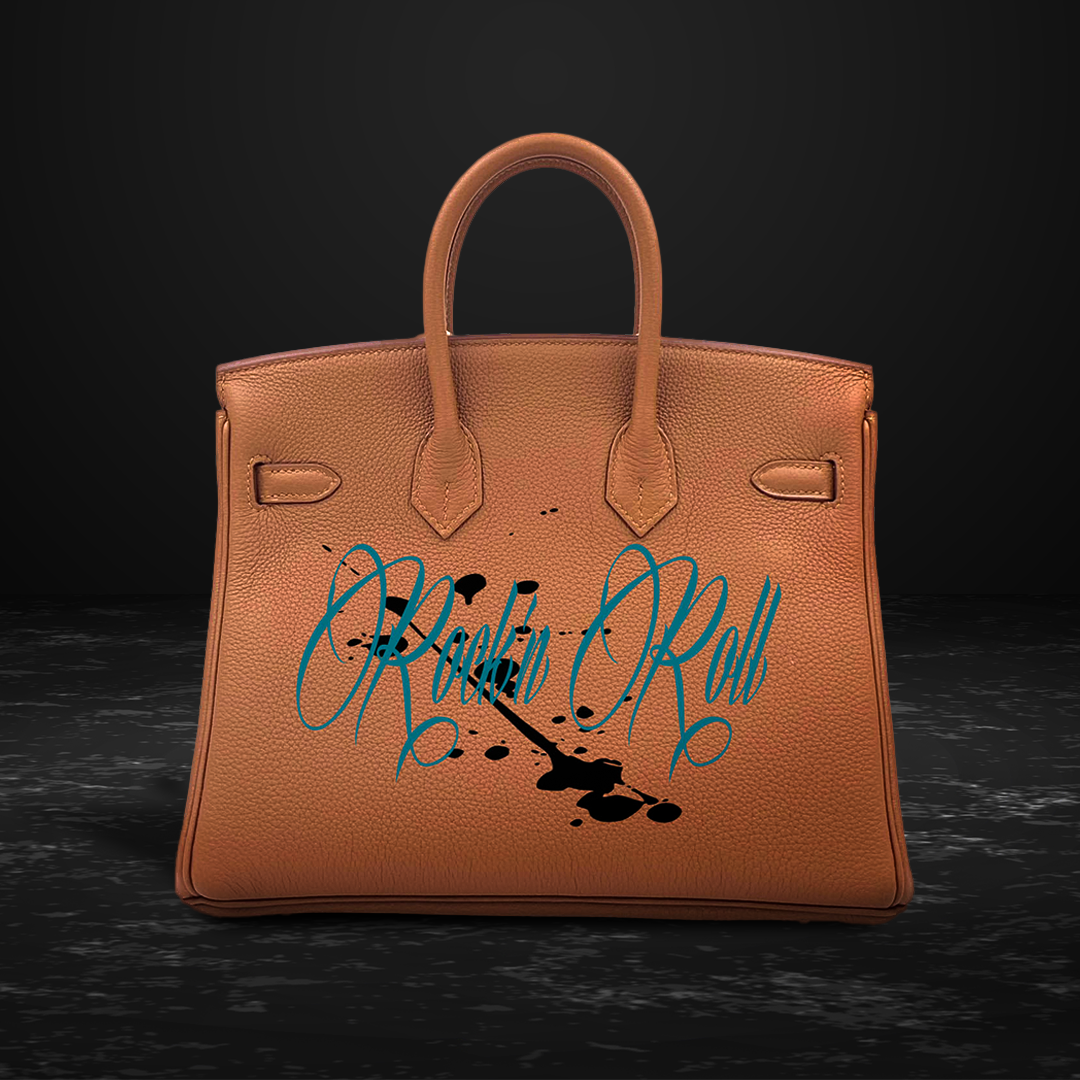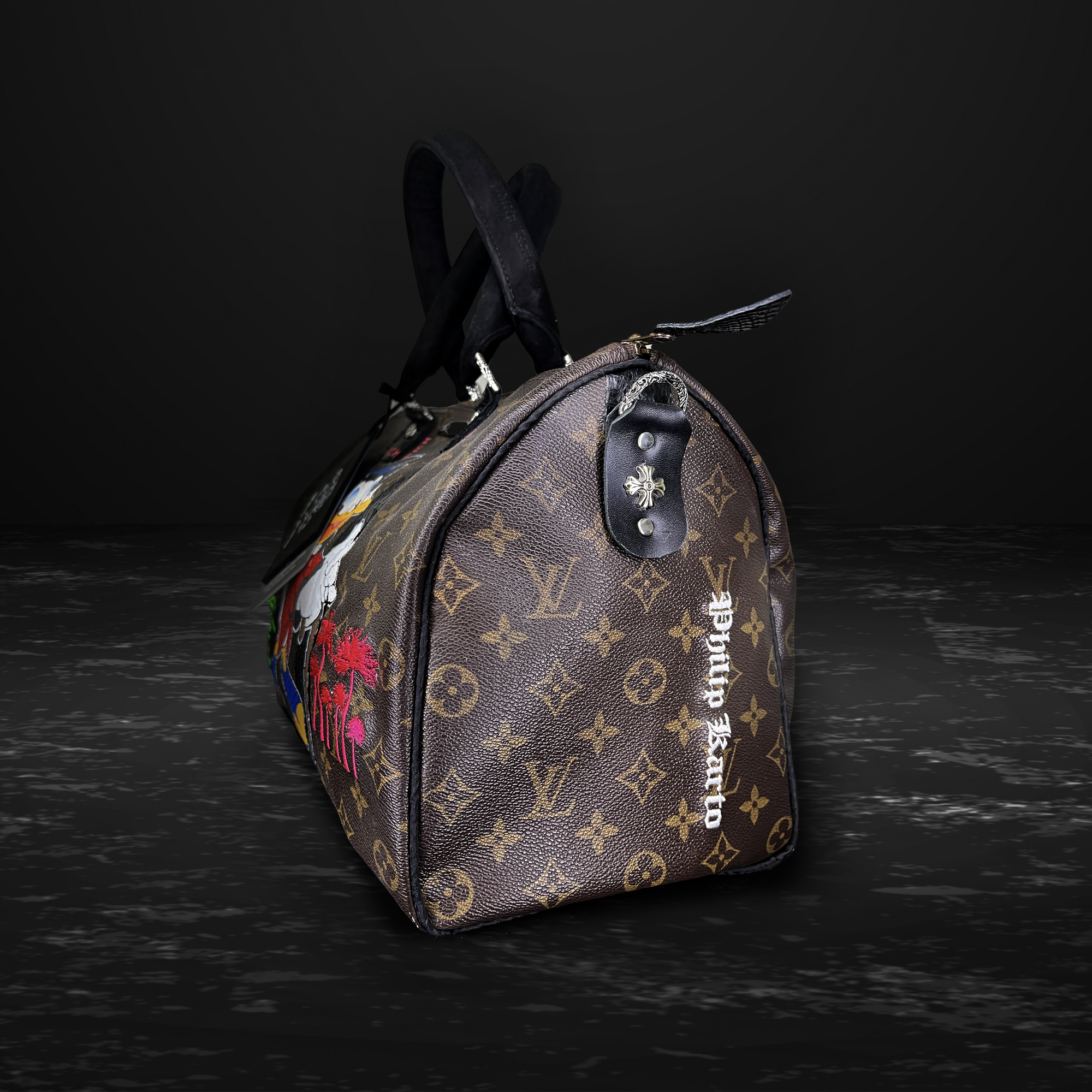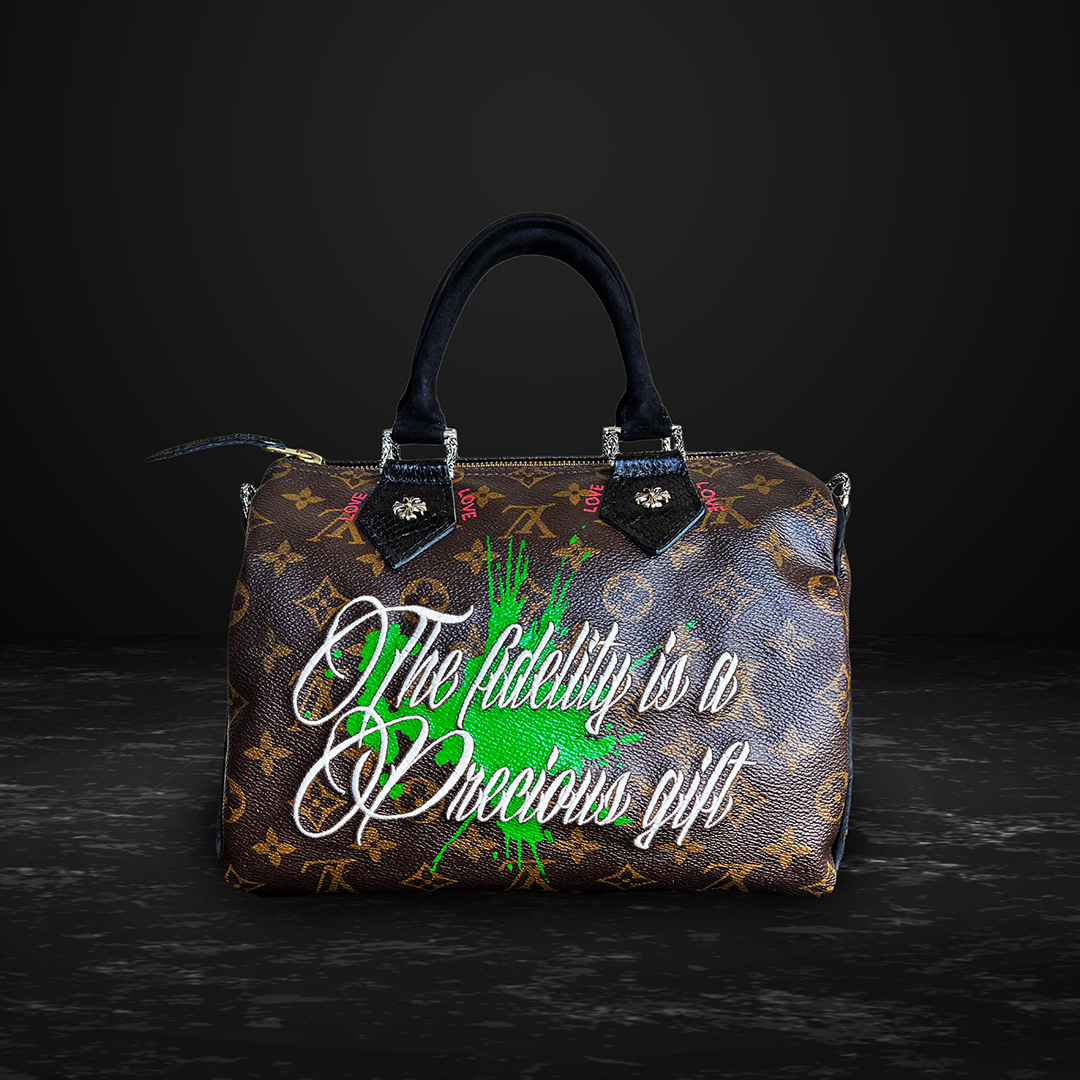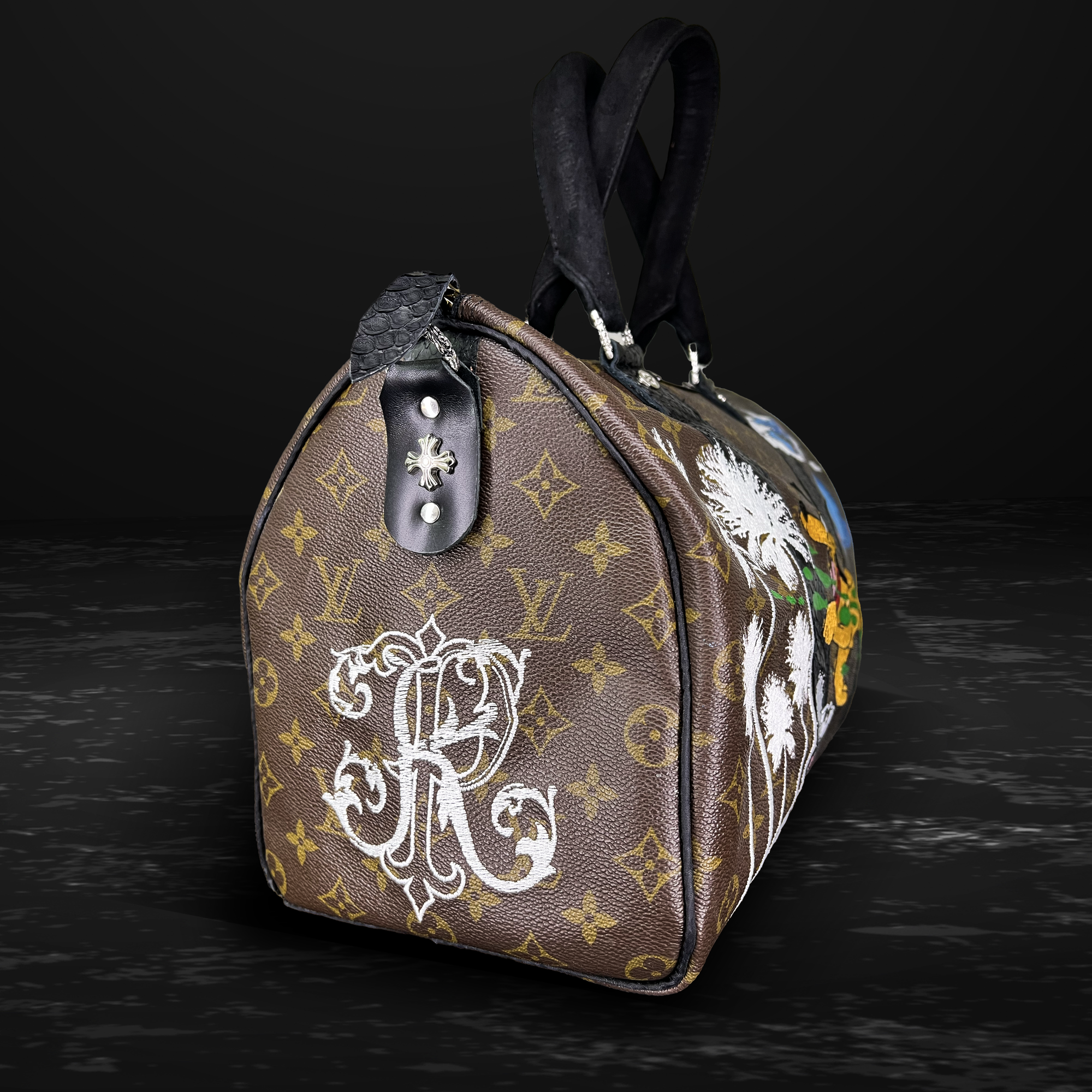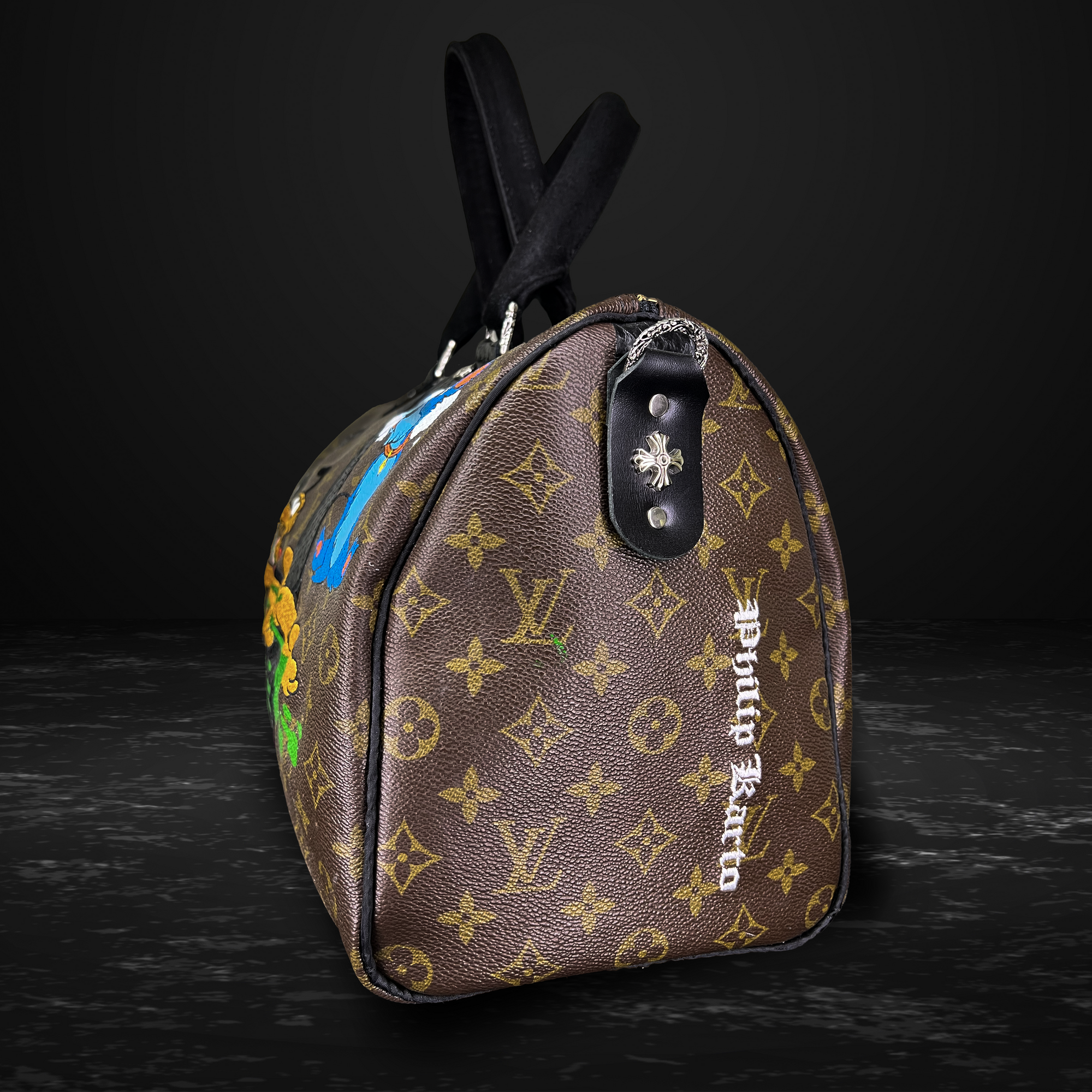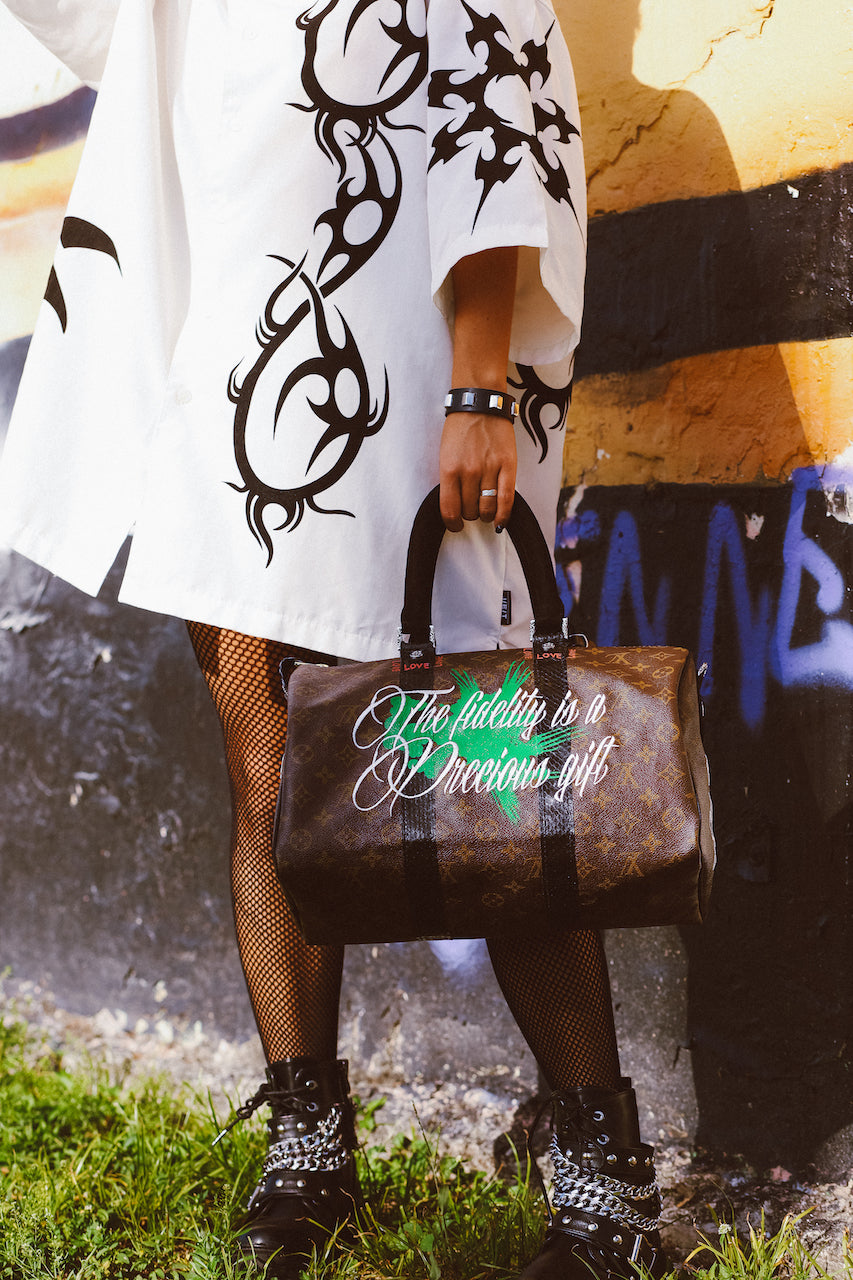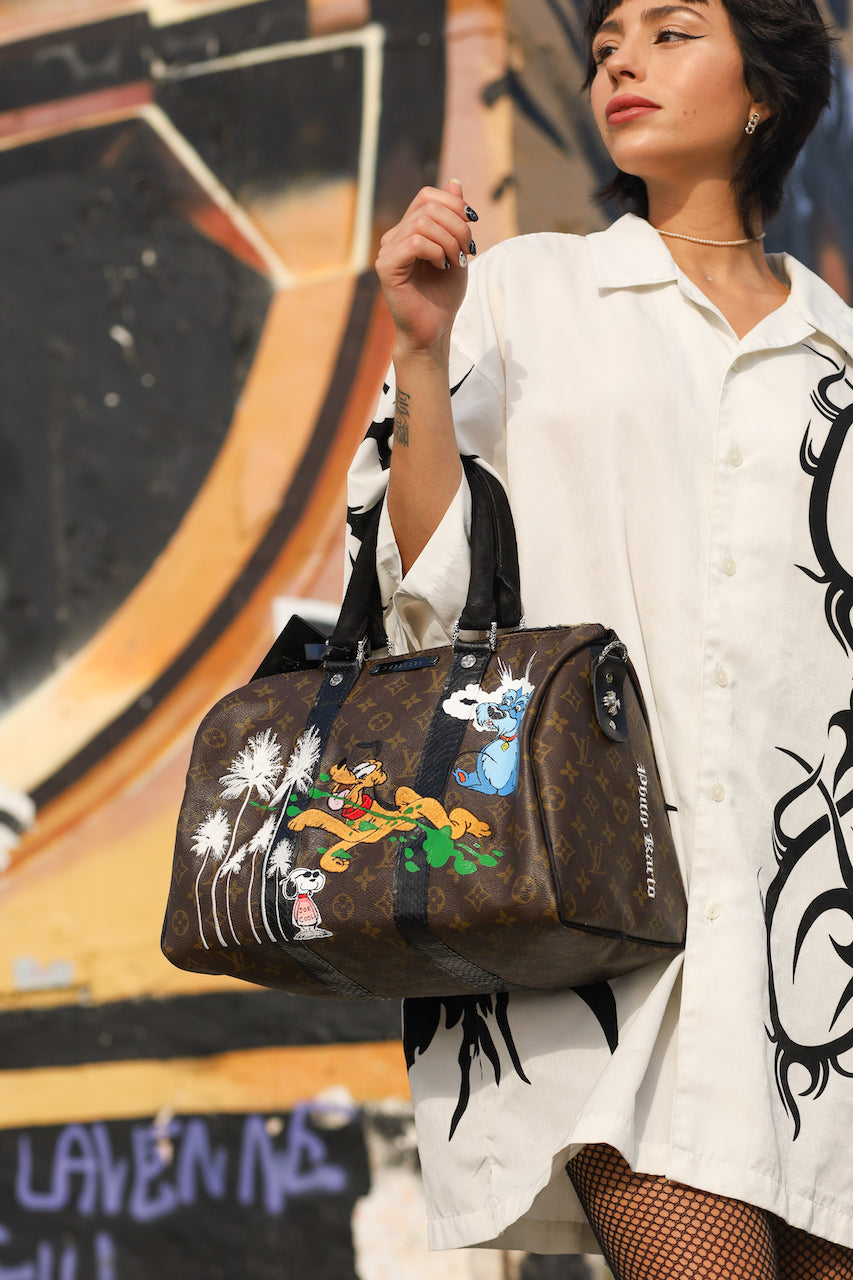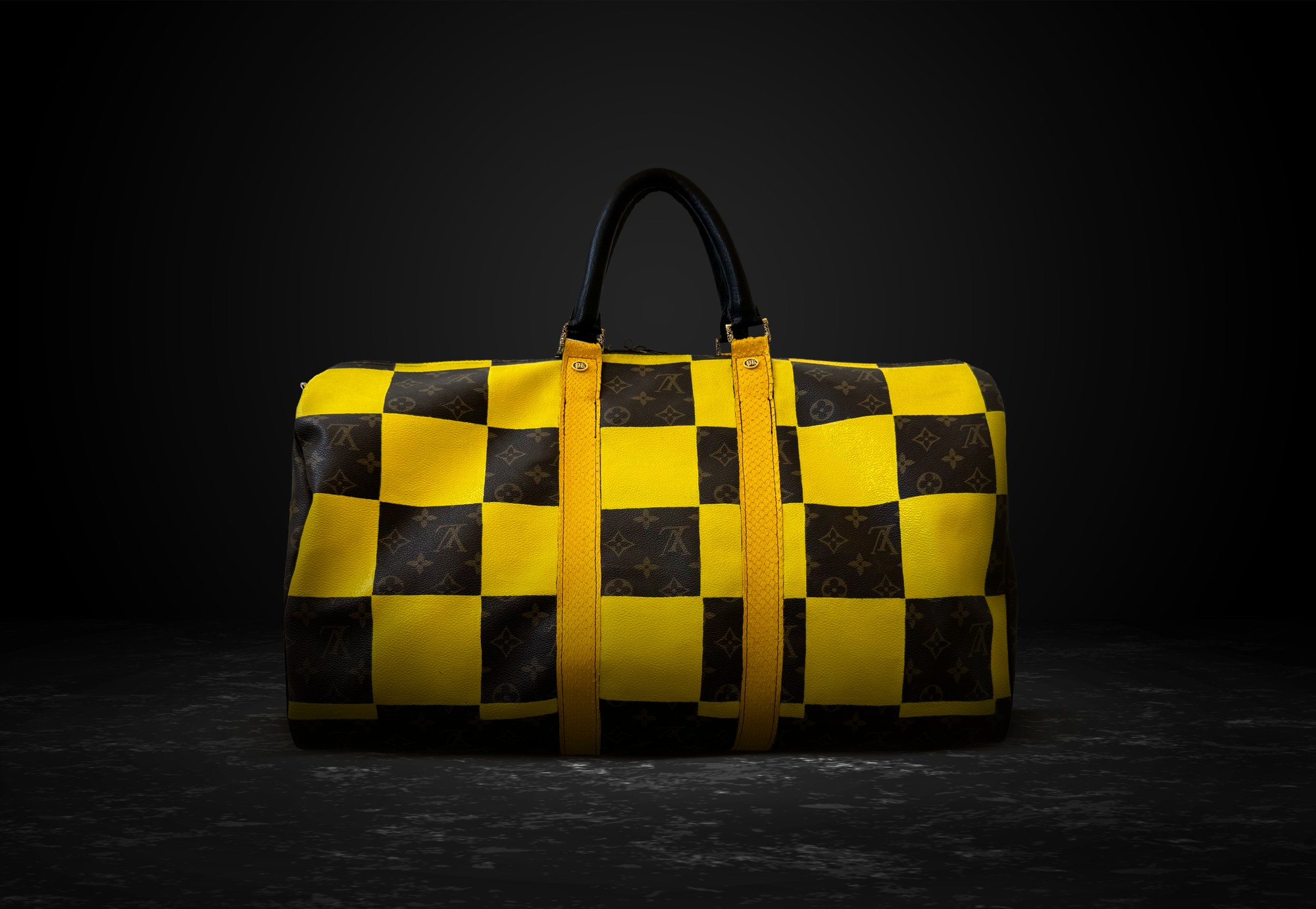Vintage Louis Vuitton bags are built to last, but decades of sun, humidity, friction, and everyday life can make edges flake, trim dry out, or coated canvas start to lift. The trick to stopping the peeling is first identifying what’s actually peeling—because “peel” can mean very different issues that need very different solutions. This guide walks you through quick triage you can do today, realistic repair options, and smart prevention so your bag keeps looking incredible for years.
Step 1: Identify what is peeling
1) Edge glazing (handles, strap edges, pocket rims)
This is the glossy “painted” edge that seals cut leather. When it ages, it can soften, get tacky in heat, then chip or flake. Symptoms: little curled flakes, sticky edges, color loss along the seam.
2) Coated canvas (Monogram/Damier surface)
Louis Vuitton’s iconic canvas is a cotton/linen base with a PVC-like coating. With age and repeated flexing, micro-cracks appear; in later stages, the topcoat can lift or “powder.” Symptoms: hairline cracks at high-flex zones (corners, zipper arcs), matte patches, pattern loss.
3) Vachetta leather (untreated trim/handles)
Vachetta is unfinished leather that patinas to honey or dark brown. It can dry, develop surface fibers, and look flaky if abused by heat or harsh cleaners. Symptoms: dryness, rough feel, darker spots from water or oils, surface fuzz.
4) Interior linings and pockets
Certain vintage linings (especially older coated fabrics) can turn sticky or dust into powder with age. Symptoms: tacky pocket interiors, flaking black/brown residue, or “melting” feel.
Pin down the material before you touch anything. The wrong product in the wrong place can lock in damage or tank resale value.

Read more: How To Restore Vintage Louis Vuitton Bags
Step 2: Quick triage to stop more peeling (do this now)
-
Get it out of heat and humidity. No radiators, cars in summer, steamy bathrooms, or direct sun.
-
De-load the bag. Weight and flexing make cracks spread; empty it and store standing or flat, not slumped.
-
Let damp areas air-dry at room temp. No hairdryers or heaters—heat accelerates peeling.
-
Pause all oils and conditioners. They can darken vachetta and weaken canvas coatings.
-
Minimize friction. If edges are flaking, wrap handles with a soft scarf or use a removable sleeve until serviced.
-
Bag it right. Use a breathable dust bag; avoid plastic bins unless you vent them and add desiccant nearby (not touching leather).
These simple steps slow deterioration immediately and buy you time to plan a proper fix.
Read more: How To Restore Vintage Louis Vuitton Bags
Step 3: What not to do (common mistakes)
-
No superglue or nail polish on edges or canvas—these get brittle, haze, and discolor.
-
Don’t soak vachetta or “steam clean” it. Water leaves dark, permanent tide lines.
-
No hobby paints over monogram canvas. They crack off and devalue the piece.
-
Don’t saturate with conditioner. Over-conditioning weakens fibers and attracts dirt.
-
Skip plastic wrap storage. Trapped humidity speeds sticky linings and mold.
Read more: How to Clean Vintage Louis Vuitton Bags
Fixing peeling edge glazing (the shiny edge paint)
When the edge coat fails, the leather underneath is exposed to moisture and friction. The durable solution is re-glazing:
-
Assess
If the leather beneath is intact (no deep cuts), re-glazing is viable. If the leather is split or stretched, a strap/handle replacement is smarter. -
DIY-lite, temporary protection
Gently wipe the edge with a barely damp microfiber, allow to dry fully (overnight), then use a removable handle cover or scarf to limit friction. This is a stopgap—not a fix. -
Professional re-glazing (recommended)
A proper re-glaze involves stripping loose material, prepping the edge, applying multiple flexible coats with curing time between layers, then finishing to the right sheen. Expect a crisp, sealed edge that won’t flake under normal use. -
When to replace
If cracking runs into the leather, or repeated re-glazes fail because the base is compromised, replace the strap/handle. Replacement often improves both function and look.

Read more: How To Restore Vintage Louis Vuitton Bags
Peeling or cracked coated canvas: what’s realistic
Here’s the tough love: once the coated canvas itself is cracked or peeling, there’s no topical product that will invisibly “heal” it. The coating has separated; paint or glue on top won’t flex with the bag and will fail quickly.
Good options:
-
Localized patching (for small, discreet areas): Stabilizes progress and improves looks but rarely disappears completely.
-
Panel replacement (best for corners or large cracks): Removing the damaged panel and installing a healthy one restores function and appearance.
-
Recycle/upcycle rebuild (when multiple panels are gone): Salvage the strongest monogram parts, re-engineer weak zones with new leather/hardware, and optionally add artwork or fresh design elements for a unique carry.
Expectation setting: Skilled work can make damage far less visible and halt spread, but a 30-year-old, heavily cracked panel won’t look “factory new” without replacement. The goal is beauty, strength, and longevity, not museum-mint perfection.
Read more: How Much Are Vintage Louis Vuitton Bags Worth
Flaking or dry vachetta: restore or replace?
Vachetta is absorbent and sensitive. Going slow preserves that rich patina everyone loves.
Safer care path:
-
Dry clean first with a clean, dry microfiber to lift surface dust.
-
Spot-test any product on a hidden area; many “conditioners” darken vachetta several shades.
-
Professional clean + seal: A pro can lift grime, reduce blotchiness, and apply a breathable protectant that slows future darkening without a plastic feel.
-
Replace strategically: New vachetta handles or trim can transform function while keeping the original body intact. This is often the best call if leather is cracked through, stretched, or badly stained.
Avoid water wiping, baby wipes, alcohol, or anything fragranced—these leave rings, dry out fibers, or pull dyes.
Read more: How to Authenticate a Vintage Louis Vuitton Bags
Sticky or peeling linings and pockets
Aging coated linings can go “tacky” or powdery. The safe route is replacement or re-bagging the pocket:
-
Do not scrape sticky lining; it smears.
-
Contain the mess: Place contents in pouches to stop transfer until serviced.
-
Replace lining with a breathable fabric or leather that matches the bag’s tone.
-
Consider a rebuild if multiple pockets/sections are failing; it’s often more efficient than repairing piece by piece.
Read more: How Old are Vintage Louis Vuitton Bags?
Repair vs. recycle/upcycle: how to choose
-
Choose repair if the problem is limited: peeling glazing on otherwise healthy straps, a single worn corner, or dry vachetta with decent structure. This preserves the bag’s original character.
-
Choose recycle/upcycle when the canvas has widespread cracks, the hardware is tired, or you want a creative refresh. A recycle build keeps the monogram’s soul while giving the bag modern durability; an upcycle adds hand-applied artwork or unique leatherwork for a one-of-a-kind piece.
Think of upcycling as conservation + creativity: you keep heritage material in circulation and enjoy something uniquely yours.
Read more: How To Spot a Fake Vintage louis Vuitton Bag
Cost and timeline ballparks (helpful, not quotes)
-
Re-glazing/edge work: typically low hundreds USD depending on length/parts.
-
New handles/strap: low to mid hundreds based on style and leather.
-
Panel replacement: mid hundreds and up depending on complexity and pattern alignment.
-
Full recycle/upcycle build: mid to high hundreds+, reflecting design time, materials, and handwork.
Turnaround depends on workshop workload and how deep the repair goes. Expect faster returns for single-part glazing; longer for panel work or custom upcycles.
Prevention that actually works
-
Rotate your carry. Don’t make a single vintage bag your daily over-loader.
-
Mind heat and UV. Park in shade, never on radiators, and don’t store in attics or steamy spaces.
-
Keep it dry. If it gets rained on, empty it and air-dry at room temp; no heaters.
-
Avoid contact chemistry. Sunscreens, perfumes, hair products, and hand sanitizer can stain or weaken coatings—let them dry fully before handling your bag.
-
Use organizers. A lightweight insert supports shape and reduces stress at corners and zipper arcs.
-
Seasonal airing. Every few months, empty and air out the bag, then store in a breathable dust bag with a small silica pouch nearby (not touching leather).
-
Gentle wipe-downs. After wear, a quick microfiber dust-off keeps grime from embedding in vachetta grain or canvas texture.
-
Watch the corners. These take the most impact; consider corner protectors or be mindful where you set the bag down.
FAQs
Can I stop glazing peel without replacing the strap?
-
Yes—if the leather beneath is intact, professional re-glazing seals and smooths the edge. It’s far more durable than any at-home “touch-up.”
Is peeling a monogram canvas fixable with a sealant?
-
Topical sealants don’t flex like the original coating and typically fail. Panel replacement or a recycle approach is the lasting solution.
Will conditioning vachetta stop flaking?
-
Over-conditioning can darken and weaken vachetta. Opt for professional cleaning and a light, breathable protectant—or replacement if the leather is cracked through.
My pocket lining is sticky. Can I powder it?
-
Powder only makes a mess. The best fix is lining replacement or re-bagging the pocket.
Will upcycling hurt resale value?
-
It depends on the market and the artistry. Heavily damaged bags can gain value with high-quality recycle/upcycle work because they return to daily-carry condition and become unique.
How long does a re-glaze last?
-
With normal use and proper storage, a professional re-glaze holds up very well. Heavy friction or heat will shorten any edge finish, so prevention matters.
Simple “Do/Don’t” checklist
Do:
-
De-load, dry, and store in breathable conditions.
-
Get edges professionally re-glazed.
-
Replace failing parts (handles, panels) before damage spreads.
-
Consider recycle/upcycle for widespread canvas issues.
Don’t:
-
Use superglue, nail polish, or hobby paint.
-
Soak vachetta or blast it with heat.
-
Trap bags in plastic bins without ventilation.
-
Expect topical fixes to repair cracked canvas.
A quick at-home routine (no products required)
-
Empty the bag and gently dust all surfaces with a dry microfiber.
-
Inspect edges, corners, and zipper arcs for micro-cracks or flaking.
-
If edges are fragile, wrap handles with a soft scarf until serviced.
-
Air the bag for a few hours in a cool, dry space.
-
Store upright in a breathable dust bag; add a small desiccant nearby.
-
Book a professional assessment for any glazing peel, canvas cracking, sticky lining, or deep vachetta issues.
This routine won’t “repair,” but it stops the spiral and protects what you love.
Restore or re-imagine with Philip Karto
At Philip Karto, we believe heritage deserves a second life—one that’s beautiful, practical, and personal. When you bring us a vintage Louis Vuitton with peeling edges, cracking canvas, or tired vachetta, here’s how we help:
-
Inspection & options. We start with photos or an in-person check, then explain the safest path: re-glazing for peeling edges, strap/handle replacement when leather is compromised, panel work for stressed corners, or a full recycle rebuild if multiple sections have failed.
-
Re-glazing done right. We strip loose material, prep the edge, and build up multiple flexible coats with proper curing—so your edges feel smooth and hold up in real life.
-
Thoughtful leatherwork. When replacement makes more sense, we match tone, thickness, and feel so the bag carries comfortably and looks cohesive.
-
Recycle & upcycle artistry. If your canvas is past simple repairs, we can salvage the strongest panels and re-engineer the bag with new leather and hardware. Prefer a statement? Our upcycled pieces feature hand-applied artwork and creative details, making each bag one of one—while honoring its history.
-
Clear timelines, careful handling. We respect the story behind every piece and keep you updated from intake to final polish.
If you’re staring at peeling glazing or a crack that’s getting bigger, don’t wait for it to spread. Send us photos of your bag and we’ll recommend a personalized plan—from subtle restoration to a bold re-imagining that turns damage into design. With Philip Karto, your vintage LV doesn’t just get “fixed”; it gets a future.




